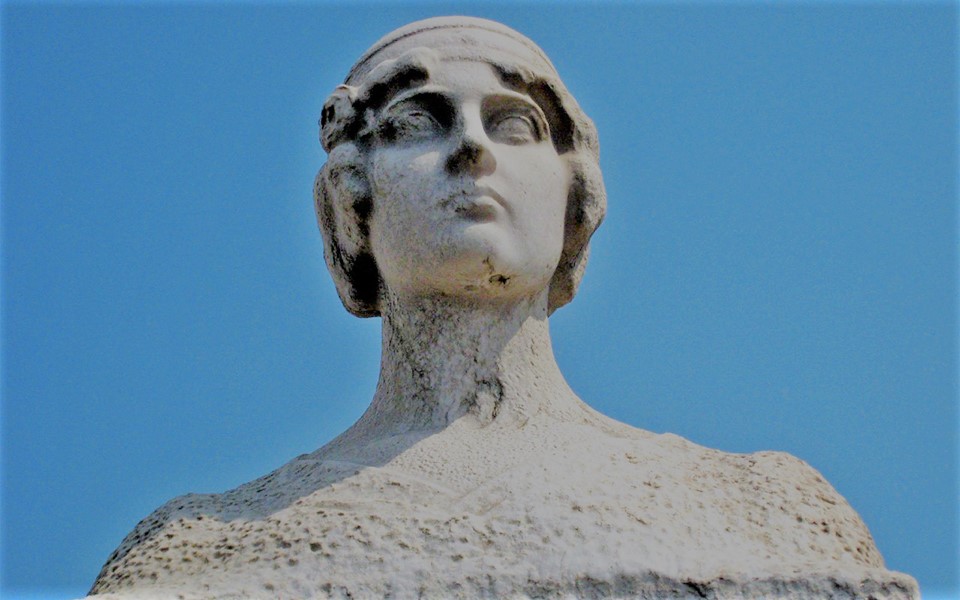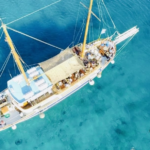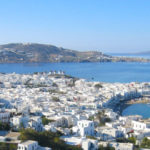When exploring the history of Mykonos it is difficult to find an accurate beginning as its development is richly entwined with fact and legend dating back thousands of years. If we consider it’s place in ancient Greek mythology it is said both Hercules and Poseidon had a hand in destroying some of the Giants that opposed Zeus on this very island. Later, as the story goes, the island was named in honor of Apollo’s grandson Mykons. During these ancient times, Mykonos, due to its proximity to Delos, which was then highly populated, became very important as a supply island. The short 2-kilometer distance between the islands was frequently traveled. For religious reasons it was said that no one should be allowed to be born or die on Delos. If this were true and this culture center so sacred, it may suggest that Mykonos had its roots as a vacation island long before modern times.
From an archeological point of view the Ionians were found to have settled on Mykonos in the early part of the 11th century BC but recent discoveries uncovered remnants from the Neolithic Kares tribe dating back to as far as 3000BC.
As the island of Delos began to develop as a sacred center, Mykonos was swept along with the influences of the different people who would come to control the region in the years to come. The Phoenicians, Macedonians and Athenians left their mark but it was not until the coming of Alexander the Great the fate of Mykonos took a turn for the better by becoming a commercial center for agriculture and maritime trade. High quality clay deposits also improved the island’s importance, as ceramic containers were the best means of preserving and exporting goods during this ancient time.
Due to its geographic location as a crossroads for shipping and it’s close proximity to Delos, the island’s future continued to flourish reaching a state of enormous wealth during the time of Roman occupation and the reign of Augustus Caesar.
During the Middle Ages Mykonos fell under the rule of the Venetians and in the years that followed found themselves to be victimized by the Saracens and latter the Turks who dominated the area from the 14th century. At this time the slave trade was common and thousands of islanders were abducted. The Greek War of Independence, which ended with its liberation from the Turks in 1830, spawned the Mykonian heroine Manto Mavroyenous who rallied the island’s people and defeated a Turkish onslaught in 1822.

Starting as early as ancient times, the cycladic islands as well as the rest of the Mediterranean sea had become famous as a natural breading ground for piracy. The island of Mykonos received its fair share of buccaneer influence, which lasted right up until the beginning of the 19th century.
With the coming of steamships also came the first signs of modern day tourism. World War II quickly put an end to this as Mykonos while experiencing German occupation suffered greatly through starvation. It took until the mid 50’s for tourism to rise again. Due to the islands unique architecture, relative seclusion and hospitality it soon became a haven for the rich and famous.
Today Mykonos enjoys a success unparalleled in its history by having become one of the worlds most famous vacation islands.











